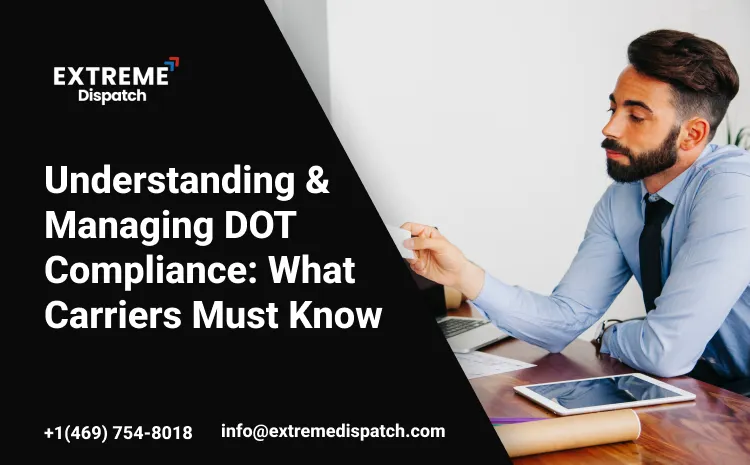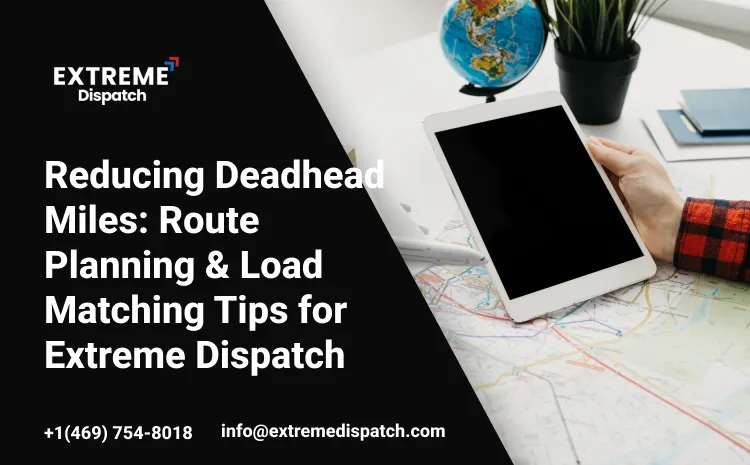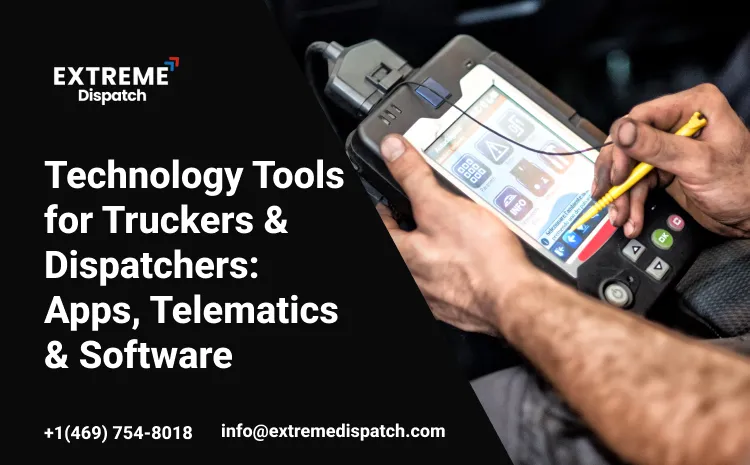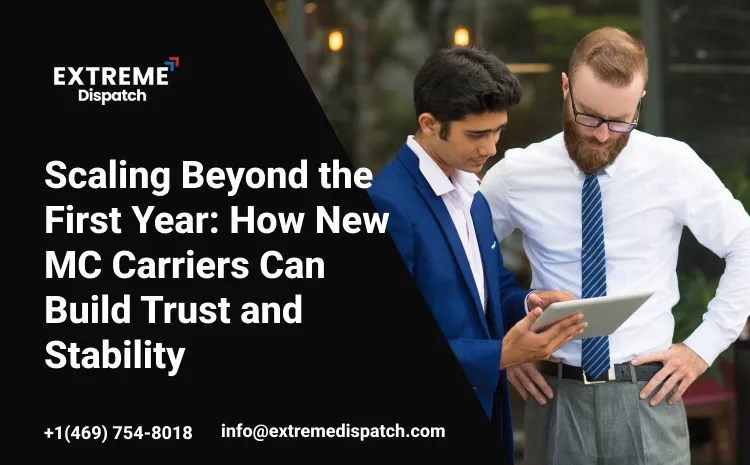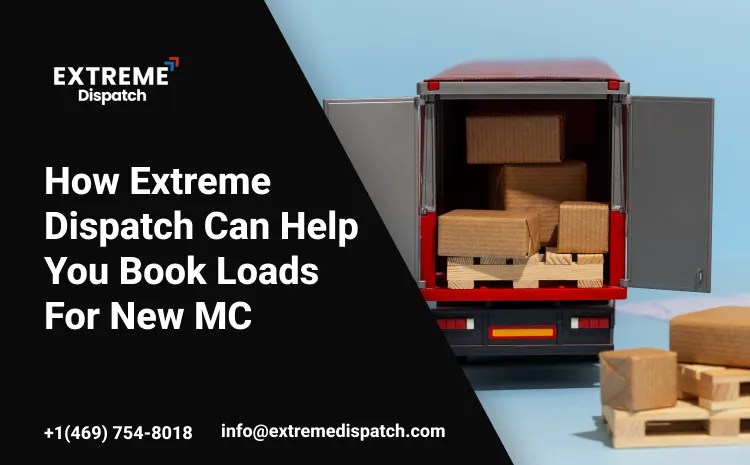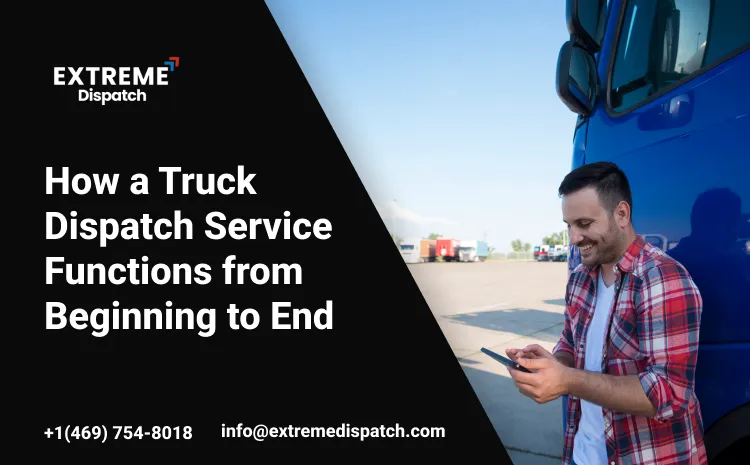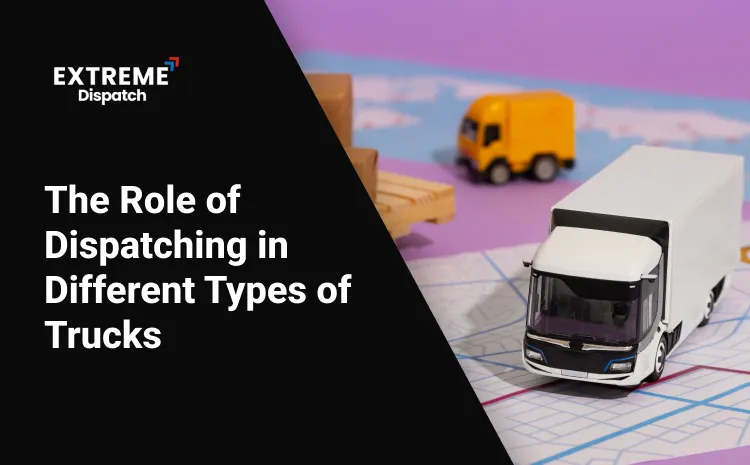Running a trucking business means managing more than just loads and routes, it’s about protecting your assets, your drivers, and your financial stability. Trucking insurance is a critical component of this protection, but navigating the different types of coverage, federal requirements, and fluctuating premium rates can feel overwhelming.
At Extreme Dispatch, we work closely with carriers to help them operate efficiently, stay compliant, and manage risks that directly impact their insurance premiums. This guide explains everything you need to know about insurance for trucking, the policies you must carry, and practical strategies to reduce costs, without sacrificing protection.

Keep Your Truck Moving – Get Consistent Loads Today
1. Why Trucking Insurance Is Non-Negotiable
Every trucking company, from owner-operators to large fleets, must have adequate insurance to stay compliant with FMCSA (Federal Motor Carrier Safety Administration) and DOT regulations. But beyond compliance, insurance provides financial security. Accidents, cargo loss, theft, and liability claims can cost hundreds of thousands of dollars, or more, if not properly insured.
Trucking insurance protects against:
- Property damage and bodily injury claims after accidents
- Cargo loss or damage while in transit
- Physical damage to trucks and trailers
- Non-trucking liability for off-duty incidents
- Environmental and general liability exposure
In other words, it safeguards your business from the unpredictable nature of the road.
2. Mandatory Insurance Requirements for Trucking Companies
The FMCSA mandates minimum levels of primary liability insurance for all for-hire motor carriers operating in interstate commerce. The minimum coverage amount depends on the type of cargo being hauled:
| Type of Cargo | Minimum Liability Coverage |
| General Freight | $750,000 |
| Oil Transport | $1,000,000 |
| Hazardous Materials | $5,000,000 |
In addition to these federal minimums, states may impose additional insurance requirements for intrastate carriers, leased owner-operators, or specialty freight.
It’s essential to carry more than just the minimum, as accidents involving commercial trucks often lead to high medical and legal expenses.
3. Types of Trucking Insurance Policies You Need
A complete insurance program for your fleet should include multiple policies, each addressing different risks. Here are the most important ones every carrier should understand:
a. Primary Liability Insurance
Covers damage or injury to others caused by your truck. It’s federally required for all carriers operating under an MC number. This is the foundation of your coverage.
b. Physical Damage Insurance
Protects your trucks and trailers from collision, theft, fire, vandalism, and weather-related damage. It’s not required by law but is essential for protecting your investment.
c. Motor Truck Cargo Insurance
Covers loss or damage to the freight you’re hauling. Brokers and shippers often require proof of cargo coverage before assigning loads.
d. General Liability Insurance
Protects your business from non-driving related incidents, such as injuries on your premises or damage caused by employees.
e. Non-Trucking Liability / Bobtail Insurance
Covers your truck when it’s being used for personal reasons, for instance, driving home after dropping off a load. Many owner-operators leased to carriers are required to carry this.
f. Trailer Interchange Insurance
Covers damage to trailers you don’t own but are hauling under a trailer interchange agreement. Common in drop-and-hook operations.
g. Workers’ Compensation
Provides medical and wage coverage for drivers or staff injured on the job. Required in most states.
h. Umbrella / Excess Liability
Adds another layer of protection beyond your primary liability limits, crucial for larger fleets or those hauling high-risk cargo.
i. Occupational Accident Insurance
For owner-operators who aren’t covered by workers’ comp, this policy provides benefits for accidental death, injury, or disability.
4. Factors That Influence Trucking Insurance Premiums
Insurance premiums vary widely across fleets and operators. Understanding what affects your rate helps you take control of your costs. Major rating factors include:
Driver Records
Your drivers’ MVRs (Motor Vehicle Records) heavily influence premiums. Violations like speeding, DUIs, or accidents raise rates significantly. A clean record lowers costs.
Claims History
Frequent or severe claims make your fleet appear riskier. Insurers reward fleets with low claims frequency and loss ratios through better pricing.
Cargo Type
Hauling hazardous materials or high-value goods increases your risk exposure, leading to higher premiums. General freight and dry van operations usually have lower rates.
Radius of Operation
Long-haul trucking across multiple states involves higher risk than local or regional operations. Shorter routes often come with lower premiums.
Equipment Age and Maintenance
Older trucks with inconsistent maintenance schedules are more prone to accidents and breakdowns. Insurers value fleets with detailed maintenance records and safety inspections.
Driver Experience and Training
Fleets with seasoned drivers or structured driver training programs benefit from lower risk scores. Continuous safety education pays off in reduced premiums.
Credit and Business History
Your business’s financial stability and years in operation matter. New trucking companies or those with poor credit may face higher rates until they build a safety track record.

Keep Your Truck Moving – Get Consistent Loads Today
5. Proven Ways to Lower Trucking Insurance Premiums
Trucking insurance doesn’t have to break your budget. Here are practical, data-backed ways to reduce your insurance premiums without cutting essential coverage:
a. Implement a Strong Safety Program
Safety is the most effective way to control insurance costs. Develop a structured safety policy that includes:
- Defensive driving courses
- Regular vehicle inspections
- Substance testing policies
- Speed monitoring systems
- Accident response procedures
Insurers often offer safety discounts when fleets can demonstrate proactive loss control.
b. Use Telematics and GPS Tracking
Modern fleet management systems and telematics provide real-time monitoring of driver behavior, speed, braking, and idle time.
These insights help you coach drivers, prevent accidents, and prove your safety record to insurers.
Extreme Dispatch encourages fleets to integrate telematics tools for both dispatch optimization and insurance benefits, fewer violations, fewer claims, and better premiums.
c. Maintain DQ Files and Compliance Records
Keep up-to-date Driver Qualification (DQ) files, maintenance logs, and Hours of Service (HOS) compliance records. Organized documentation shows underwriters that you manage risk responsibly.
d. Increase Your Deductibles
Opting for a higher deductible reduces your monthly premium. Just ensure your business can handle the deductible amount in case of a claim.
e. Bundle and Review Policies Annually
Combine multiple coverages with one insurer (e.g., liability, cargo, and physical damage). Bundling often brings multi-policy discounts.
Review your policies annually to eliminate outdated coverage or duplicate limits.
f. Hire Experienced Drivers
Insurance companies reward fleets with experienced, well-trained drivers. Establish hiring standards based on minimum experience, clean driving history, and verified employment background.
g. Implement Preventive Maintenance Programs
Proactive maintenance not only reduces breakdowns but also demonstrates reliability. Keep digital maintenance records accessible for audits and insurer reviews.
h. Shop Around and Work with Specialized Brokers
Different insurers specialize in different types of trucking operations. Partner with brokers who understand commercial trucking insurance and can access niche markets for better rates.
6. How Extreme Dispatch Supports Safer, Insurable Operations
At Extreme Dispatch, we go beyond dispatching loads. Our mission is to help carriers operate smarter, safer, and more profitably, and that includes reducing risks that affect insurance costs.
Here’s how our dispatch support connects to better insurance outcomes:
a. Route Optimization and Risk Reduction
By planning efficient, low-risk routes, Extreme Dispatch helps minimize exposure to high-accident zones and reduces deadhead miles, cutting both fuel costs and risk incidents.
b. Compliance and Documentation
We help carriers maintain up-to-date FMCSA compliance, keep driver files organized, and ensure load documentation is audit-ready, all factors that improve insurer confidence.
c. Timely Load Scheduling and Maintenance Coordination
Efficient dispatching prevents overworked drivers and keeps HOS compliance intact, directly reducing accident risks that could raise premiums.
d. Risk-Informed Load Selection
By analyzing freight type, destination, and broker reliability, we help carriers choose safer, more profitable loads that won’t expose them to unnecessary risk.
In short, by improving your operational discipline, Extreme Dispatch helps you strengthen your insurance profile and position your fleet for lower premiums.
7. Common Mistakes That Increase Insurance Costs
Even experienced carriers sometimes make costly insurance mistakes. Avoid these pitfalls to keep your coverage effective and affordable:
- Failing to update policy details (e.g., adding trucks or changing routes)
- Ignoring small claims, leading to hidden risks and repeated incidents
- Not reviewing driver MVRs regularly
- Skipping preventive maintenance
- Letting compliance paperwork expire (e.g., MCS-90, BOC-3)
- Choosing minimum coverage only without considering real-world costs
Staying proactive and detail-oriented keeps your fleet in a strong position with insurers.
8. Future Trends in Trucking Insurance
Insurance for trucking is evolving rapidly with technology and data analytics. Fleets using dashcams, AI-driven telematics, and predictive maintenance software are gaining favorable treatment from insurers.
Expect to see more usage-based insurance models in the coming years, where premiums are tied directly to driver performance and fleet safety metrics. Carriers embracing these tools will lead the market in both safety and cost efficiency.
Conclusion
Trucking insurance isn’t just a regulatory requirement, it’s an investment in the survival and stability of your business. The right mix of liability, cargo, and physical damage coverage protects your assets, drivers, and reputation from unpredictable risks.
By improving safety, maintaining compliance, and optimizing your operations through Extreme Dispatch, you can lower insurance premiums while enhancing your fleet’s long-term profitability.At the end of the day, smart trucking companies don’t just haul freight, they manage risk strategically. And that’s where Extreme Dispatch becomes your most valuable partner.
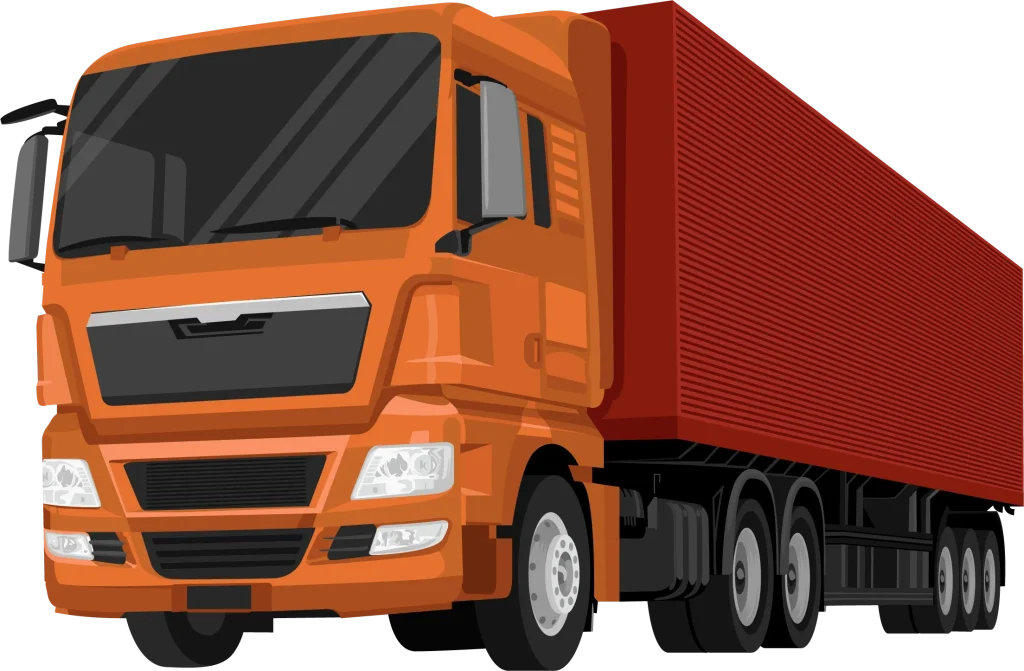
Subscribe to Learn more about Extreme Dispatch
By clicking “Subscribe” you agree to our Privacy Policy and consent to using your contact data for newsletter purposes



